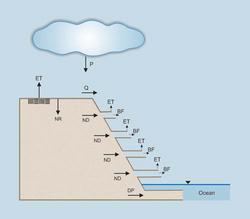|
GROUNDWATER SUSTAINABILITY |
♦ Fact No. 1 ♦
All groundwater reservoirs are temporarily holding water in transit
from a place of recharge to a place of discharge.
Water originating in precipitation and snowmelt
seeps into the ground and moves in a general downward direction until it reaches the water table. Then it moves along a nearly horizontal hydraulic gradient
to discharge naturally
somewhere downstream, where the water table intersects lakes, streams and/or rivers in the vicinity. Thus, groundwater is essentially
borrowed surface water.

|
Fig. 1 Typical pattern and direction of groundwater flow.
♦ Fact No. 2 ♦
A pristine groundwater reservoir is in steady state, with inflows equal to ouflows.
In a groundwater reservoir under equilibrium, inflows through natural recharge equal outflows through natural discharge.
Therefore, net recharge is zero.
Fig. 2 Factors controlling the response of an aquifer to discharge
by wells.
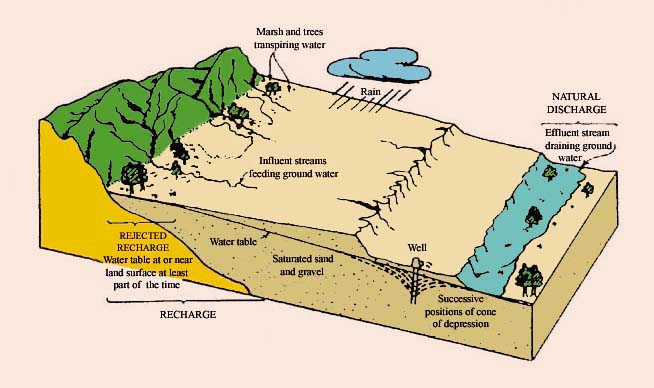
♦ Fact No. 3 ♦
All pumping comes from capture; the greater the intensity of pumping, the greater the capture.
Every volume of water pumped from a well comes from the capture of recharge and
discharge, and in cases of groundwater depletion, increasingly from aquifer storage. Thus, pumping results in
more water flowing into the well and less water flowing out as aquifer discharge. In extreme cases,
pumping comes from depletion of the water stored in the aquifer.
Fig. 3 Pristine, developed, and depleted groundwater systems.
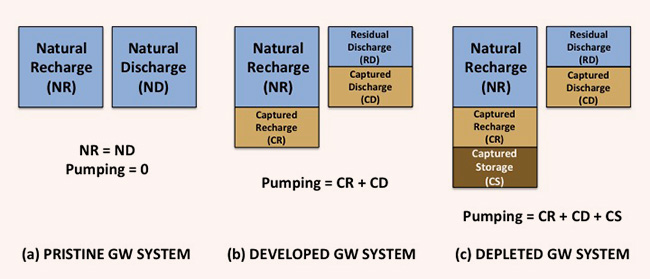
♦ Fact No. 4 ♦
Capture comes from decreases in natural discharge and increases in aquifer recharge.
The decrease in natural discharge impairs neighboring freshwater bodies and groundwater-dependent ecosystems.
Capture has wide-ranging effects, including the drying of lakes and wetlands,
loss of baseflow, and loss of riparian ecosystems.
Fig. 4 Dead riparian trees near Ash Creek, Utah (2008).
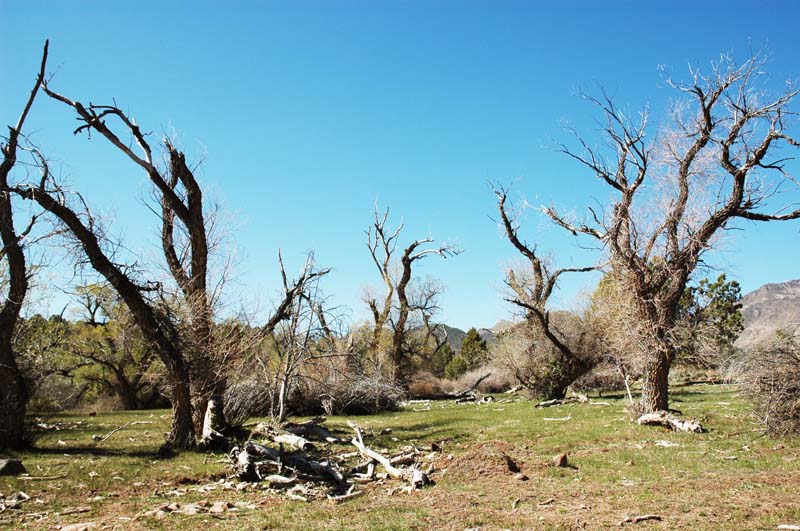
♦ Fact No. 5 ♦
Capture depends on usage and is not related to size or hydrogeological characteristics of the aquifer.
Capture does not depend on aquifer size or amount of natural recharge.
Thus, there is no physical relation between sustainable yield and natural recharge.
However, for practical purposes, a working value of sustainable yield may be expressed as a percentage of natural recharge.
Fig. 5 Surface water and groundwater relations.
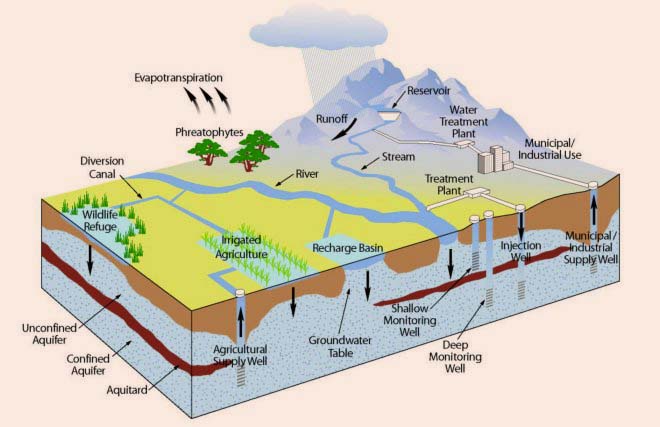
♦ Fact No. 6 ♦
The traditional concept of safe yield, which equates safe yield with natural recharge, is flawed and has been widely discredited.
Safe yield cannot be equated with natural recharge, because in Nature, the latter goes on to form part of natural discharge.
Thus, in a pristine system, in equilibrium, net recharge is zero.
Fig. 6 Groundwater pumping.
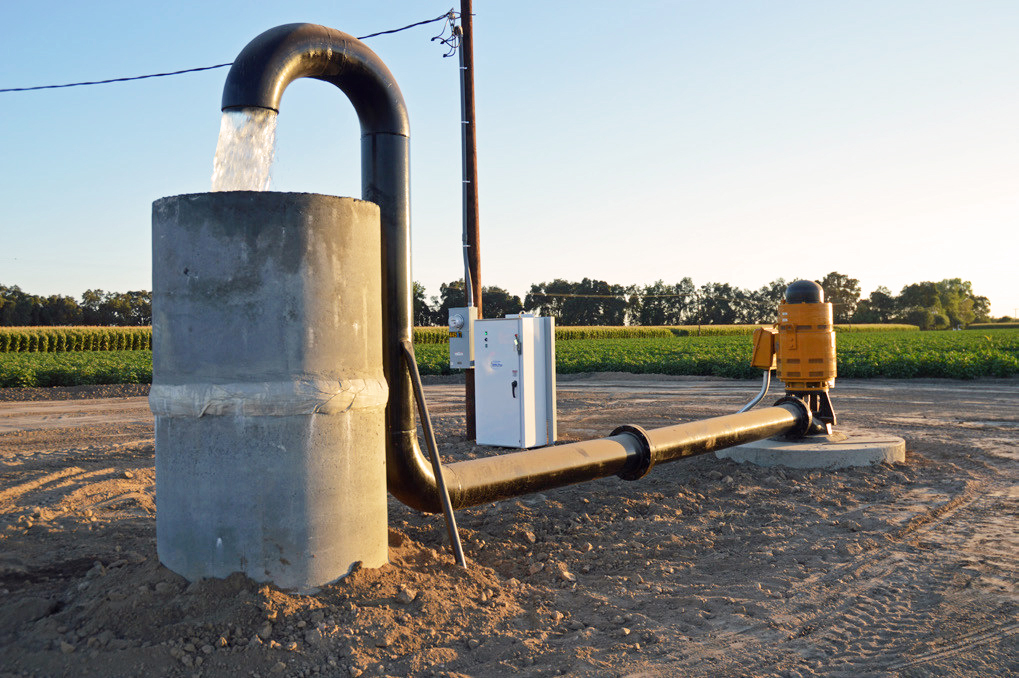
♦ Fact No. 7 ♦
Sustainable yield depends on the amount of capture, and whether this amount can be socially accepted as a reasonable compromise between
a policy of no use and the use of all natural discharge.
A certain amount of "sustainable" yield may be accepted to avoid the sequestration of all natural recharge and thus, of all natural discharge.
Fig. 7 Groundwater pumping.
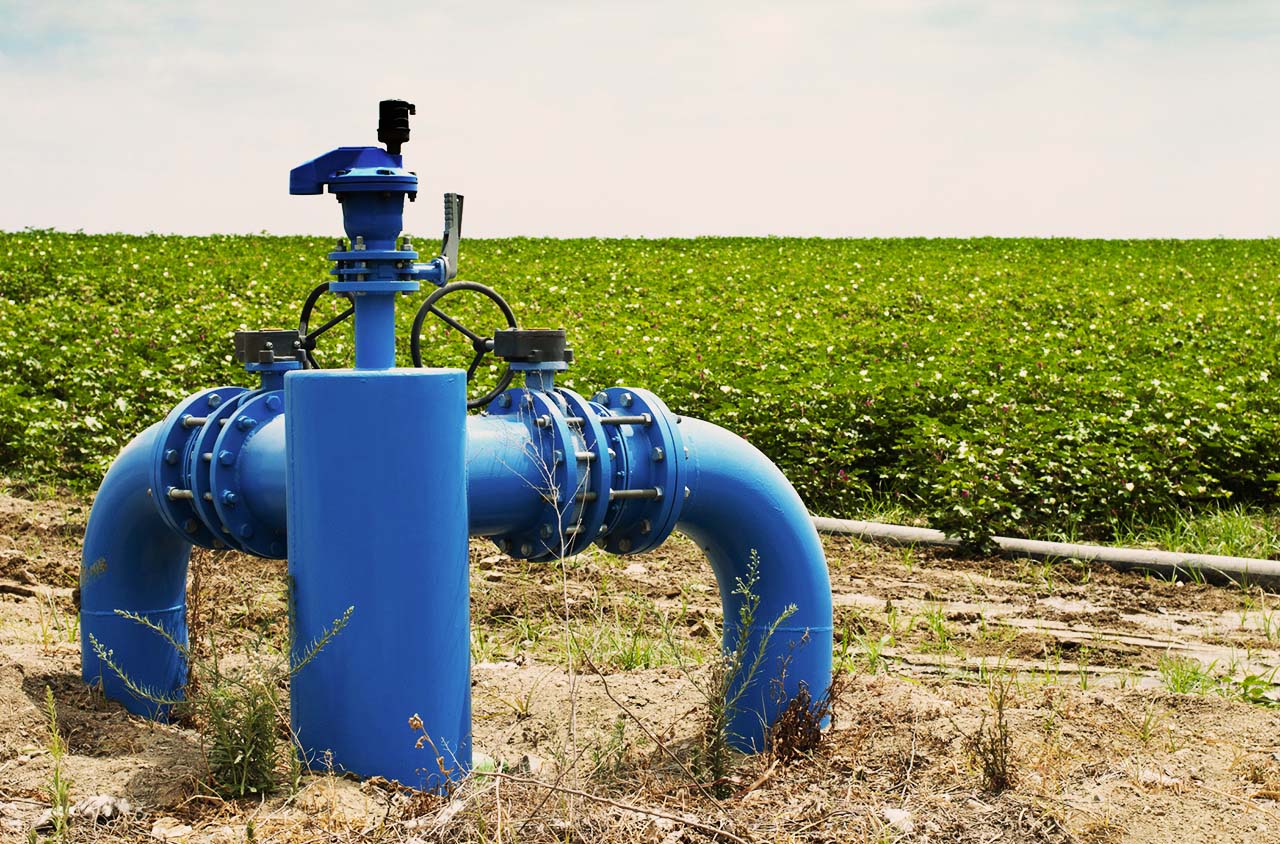
♦ Fact No. 8 ♦
Sustainable yield is a moving target, to be determined after judicious study and appraisal of all issues regarding groundwater utilization.
Studies to be made on a local/regional basis will determine
the optimum or reasonable compromise between conflicting interests. In addition to hydrogeology, the disciplines of surface-water hydrology, ecology,
and related socioeconomic and legal aspects have a bearing on the analysis.
Fig. 8 The effect of groundwater withdrawals on the southern
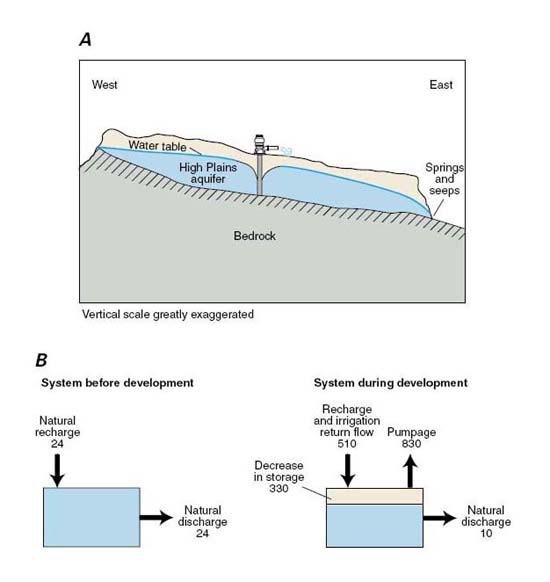
High Plains aquifer.
♦ Fact No. 9 ♦
Sustainable yield may be expressed as a percentage of natural recharge.
A working value of sustainable yield may be taken as a suitable percentage of natural recharge.
Conservative values are around 10%.
Fig. 9 Groundwater yield versus recharge/discharge.
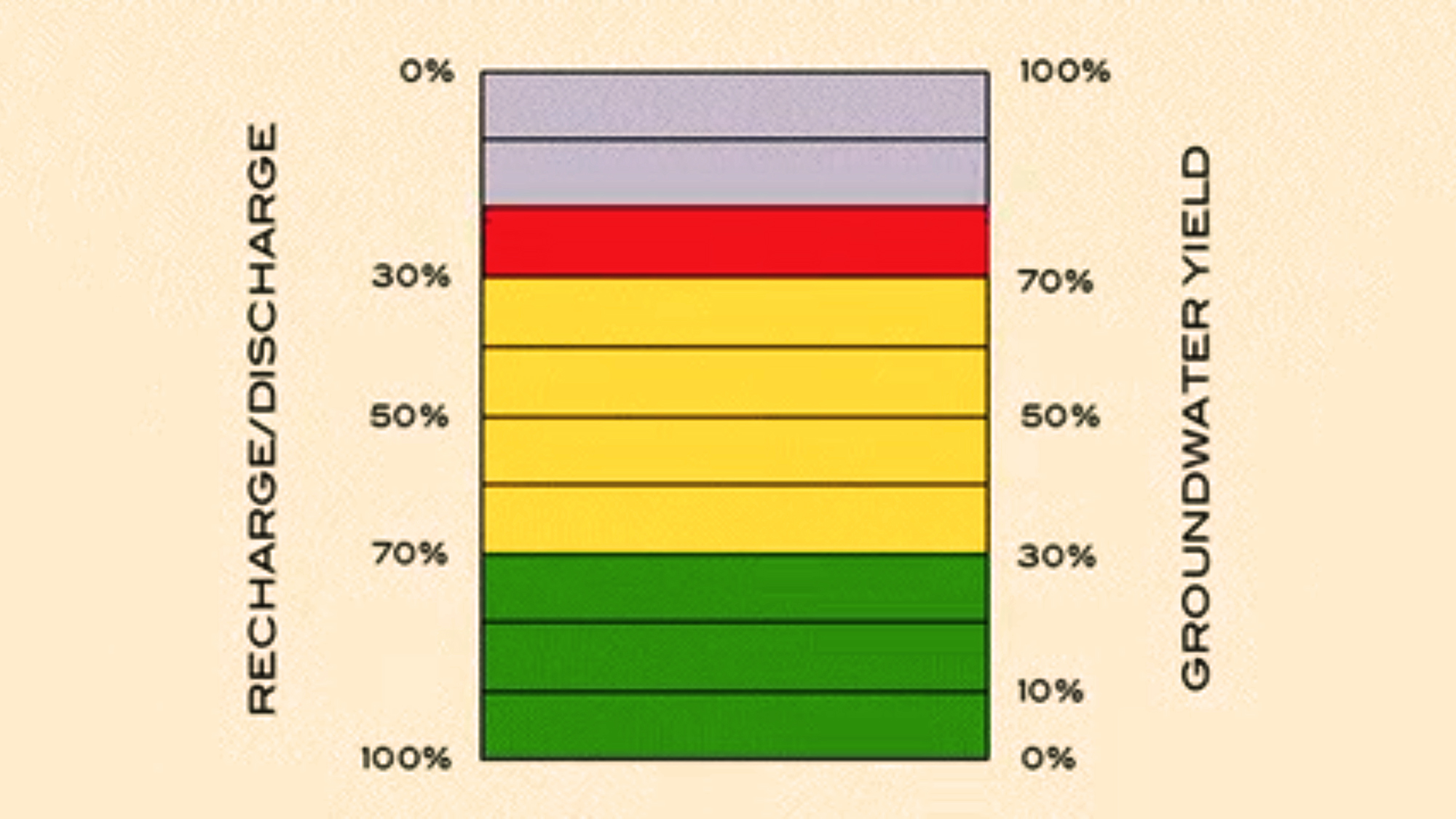
♦ Fact No. 10 ♦
Interdisciplinary studies are needed to develop more experience in yield-to-recharge percentages.
There is an urgent need for studies to develop working values for yield-to-recharge percentages on a local and regional basis.
These studies must be interdisciplinary in nature.
Fig. 10 A specimen of coast live oak in Boulevard,
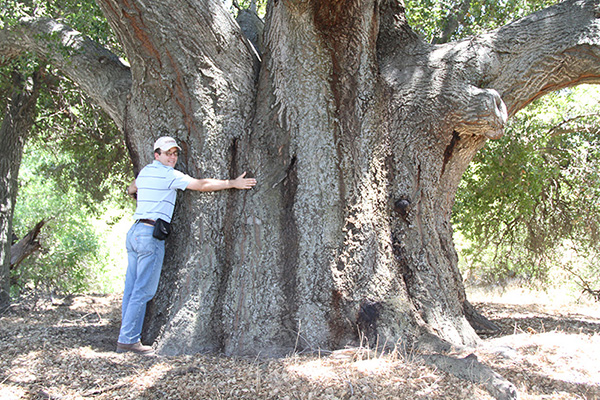
San Diego County, California (2014).
♦ Fact No. 11 ♦
Sustainability may be fostered by enlightened management seeking to:
(a) capture rejected recharge, (b) encourage clean artificial recharge, and (c) limit negative artificial recharge.
Groundwater yield can be increased by the capture of additional surface water, increasing human-induced recharge, and reducing
recharge losses to surface water.
Fig. 11 Artificial recharge of groundwater.
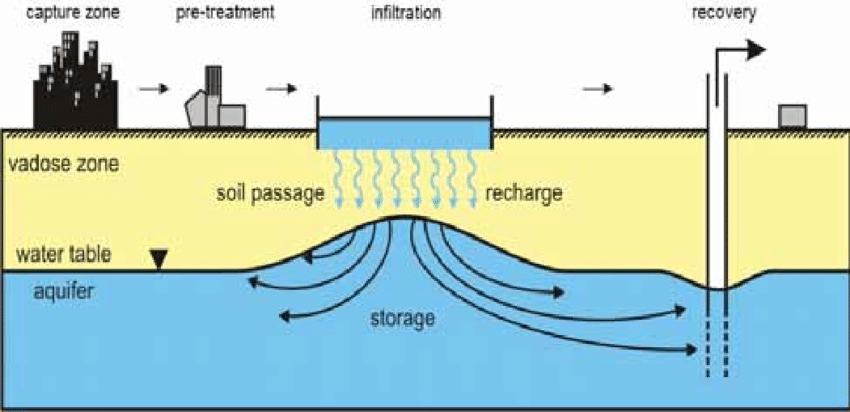
♦ Fact No. 12 ♦
Baseflow conservation may be regarded as the standard against which to measure groundwater sustainability.
Groundwater sustainability may be assessed through baseflow conservation. Thus, sustainable yield may be interpreted as such that
conserves a predetermined
baseflow level.
Fig. 12 Relation between stormflow and baseflow.
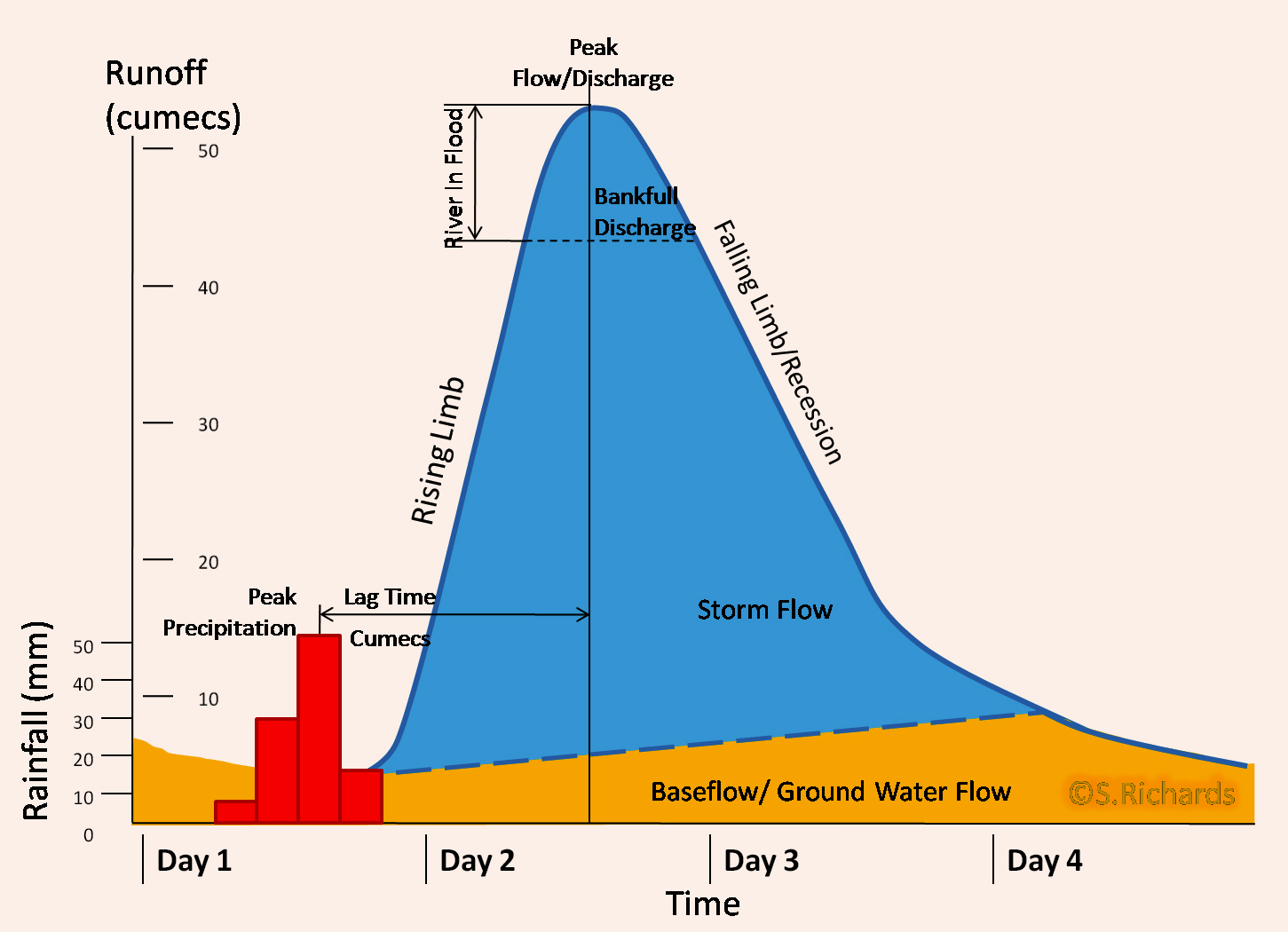
♦ Fact No. 13 ♦
Sustainability reflects resource conservation policy. The more conservative a policy, the more sustainable it is likely to be.
Sustainability goes hand-in-hand with conservation. A strong policy of resource conservation is a strong policy of resource sustainability.
Fig. 13 Resource conservation leads to sustainability.

